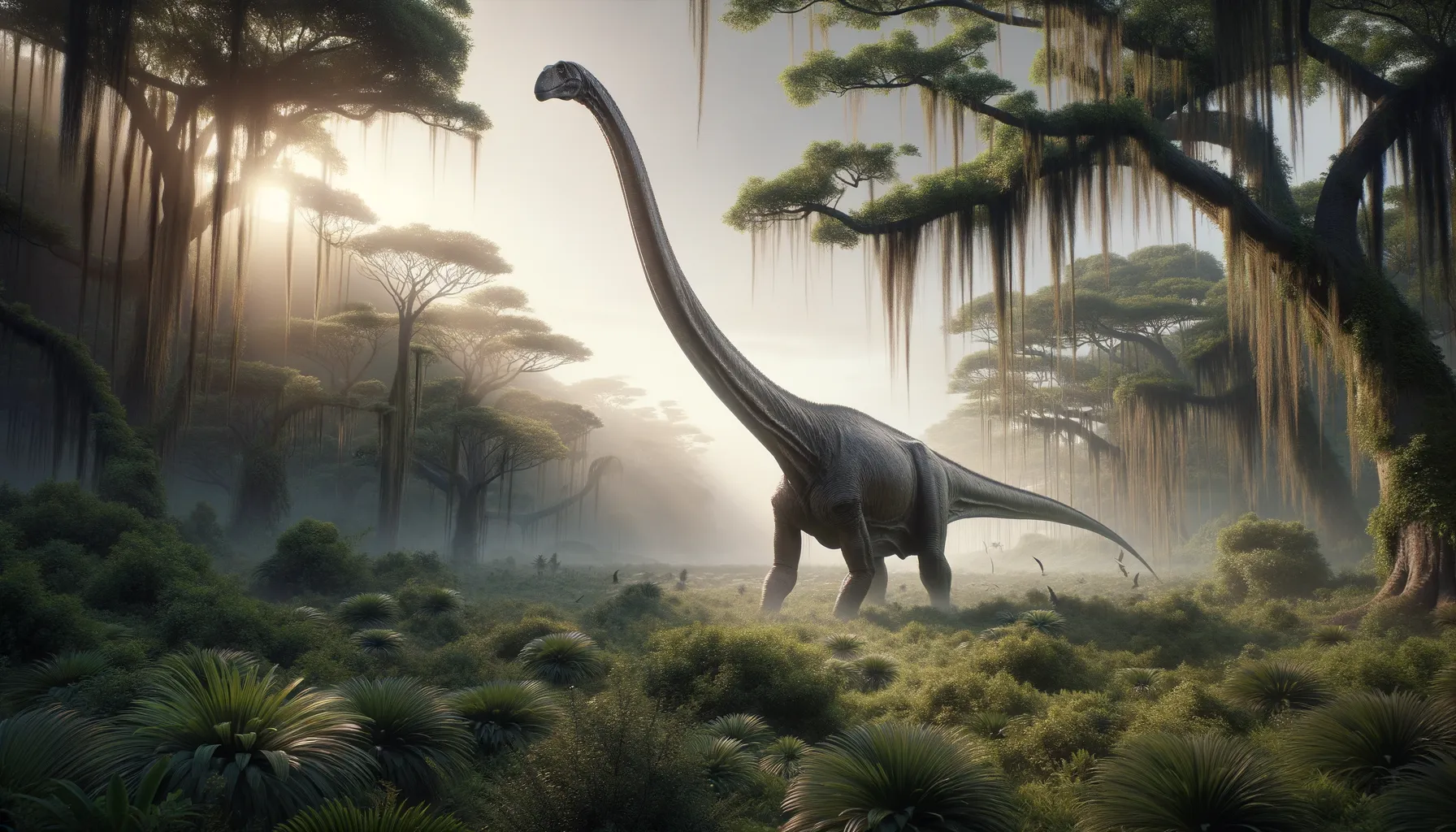
Qijianglong
The long-neck from ancient China.
Period
Jurassic
Length
Measured roughly 50 feet in length.
Height
Could stand about 13 feet tall at the hip.
Weight
Estimated to weigh around 22 tonnes.
Qijianglong was a long-necked dinosaur known for its strikingly long neck, which comprised half of its body length. It roamed the region now known as China during the late Jurassic period. This sauropod had a graceful, elongated frame and contributed to our understanding of Asian dinosaur evolution. Its distinctive skeletal features set it apart from other sauropods of its time, marking an important discovery in paleontological history.
Diet
Qijianglong was a herbivore, feeding primarily on leaves and shrubs. Its long neck allowed it to reach higher vegetation that other dinosaurs might not have accessed.
Hunting
As a herbivore, Qijianglong did not hunt other animals. Instead, it likely foraged for plant material, using its size to deter potential predators.
Environmental challenges
Qijianglong faced challenges such as fluctuating temperatures and changes in vegetation during the Jurassic. These environmental shifts required it to adapt its feeding strategies to cope with the availability of different plant species. The presence of predators also posed a constant threat, particularly to juvenile dinosaurs.
Speed
It was not a fast dinosaur, likely moving slowly.
Lifespan
Lived for several decades, similar to modern large animals.
First discovery
Discovered in 2015 in Qijiang, China.
Fun Facts
- Qijianglong, also known as the 'dragon of Qijiang,' was named after the region in China where it was discovered.
- This dinosaur lived approximately 160 million years ago during the Late Jurassic period.
- Qijianglong was a long-necked dinosaur, known as a sauropod, and its neck made up over half of its total body length.
- The discovery of Qijianglong has provided scientists with new insights into the evolution of long-necked dinosaurs in Asia.
- Qijianglong's long neck may have helped it reach high vegetation, like a giraffe does today.
- Unlike many other dinosaurs found in pieces, Qijianglong was discovered with an unusually complete and well-preserved skeleton.
- The discovery site of Qijianglong includes several other dinosaurs, suggesting it was part of a rich ecosystem.
Growth and Development
Qijianglong likely experienced considerable growth during its early life stages. Juveniles may have relied on herd protection until they reached a size where they could deter predators. The growth rate of young Qijianglong was probably rapid, ensuring they could join the adult ranks swiftly.
Habitat
Qijianglong lived in what is now southern China, a region that, during the Jurassic, featured lush forests and diverse plant life. This environment provided plentiful food resources, ideal for its herbivorous diet. Water sources would have been abundant, supporting the needs of large herds of sauropods.
Interaction with other species
Qijianglong likely shared its habitat with other sauropods, in addition to smaller herbivorous and carnivorous dinosaurs. These interactions were complex, often involving competition for food and territory. Symbiotic relationships might have existed, like mutual alertness to predators.
Natural lifespan
Its natural lifespan was likely several decades long.
Reproduction
Like other sauropods, Qijianglong probably laid eggs in nests. Parental care was minimal, with hatchlings joining herds early for protection. Mating rituals might have been complex, involving displays of strength or size.
Social behaviour
Qijianglong likely lived in herds, a common behavior for sauropods seeking protection in numbers. This social structure allowed individuals to share knowledge of food sources and alert one another to danger. Communication could have involved vocal calls or physical displays.
Fossil locations
Fossils of Qijianglong were first discovered at a construction site in Qijiang, China, providing valuable insights into its anatomy. The location in China suggests these dinosaurs were once widespread across the region. The discovery contributed greatly to our understanding of sauropod distribution in Asia.
